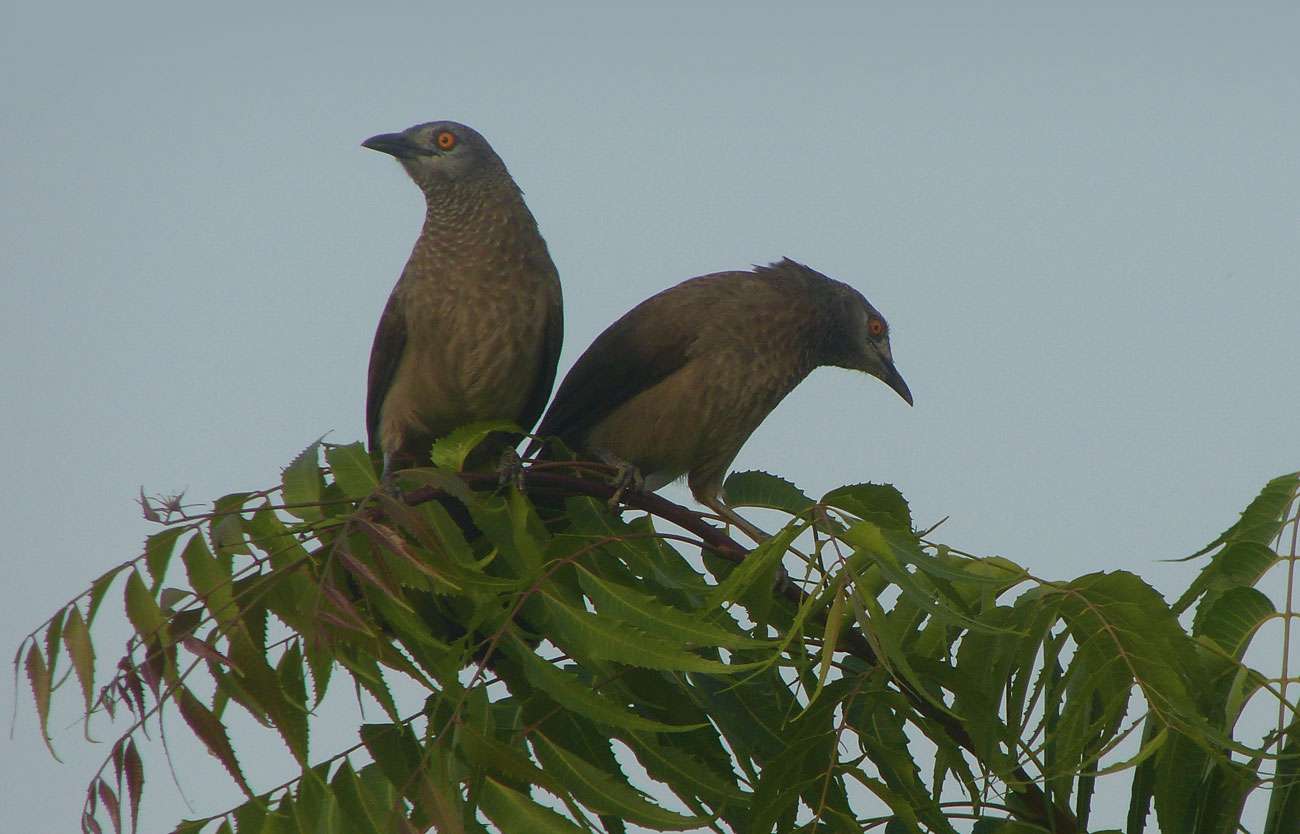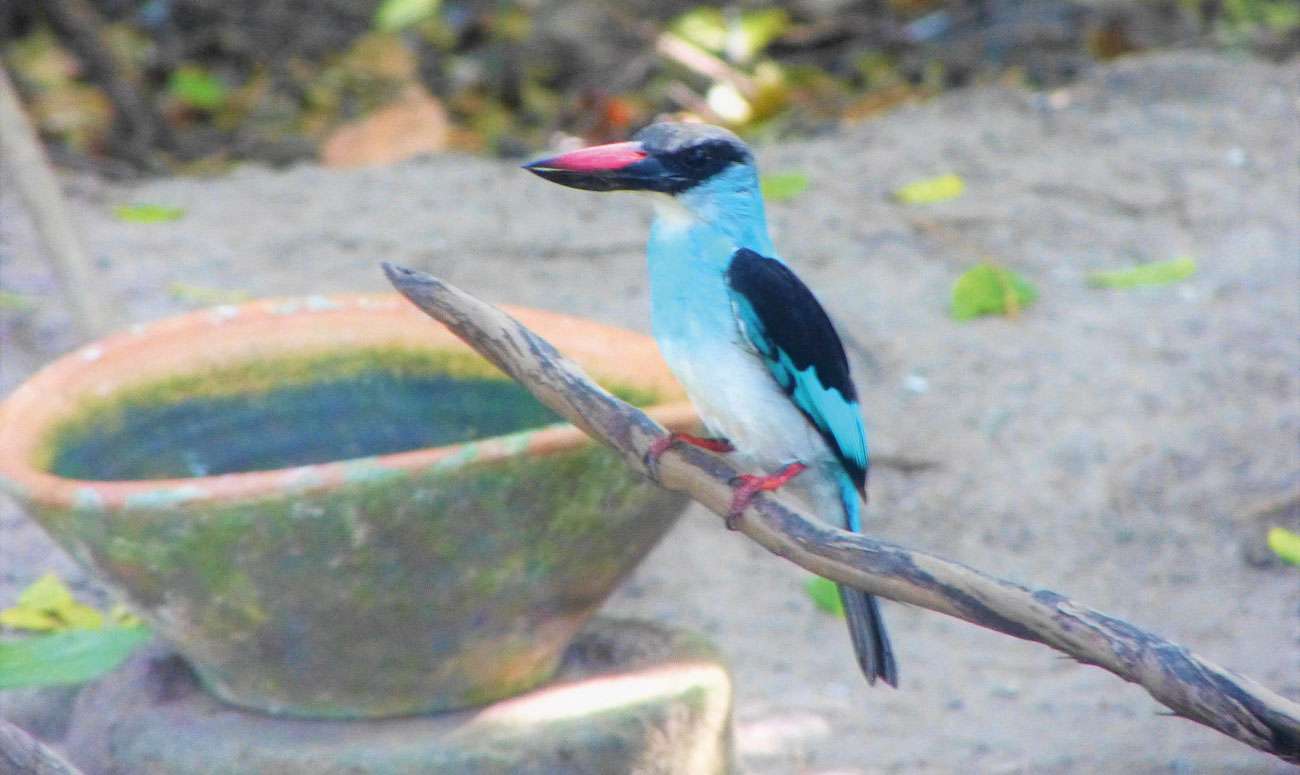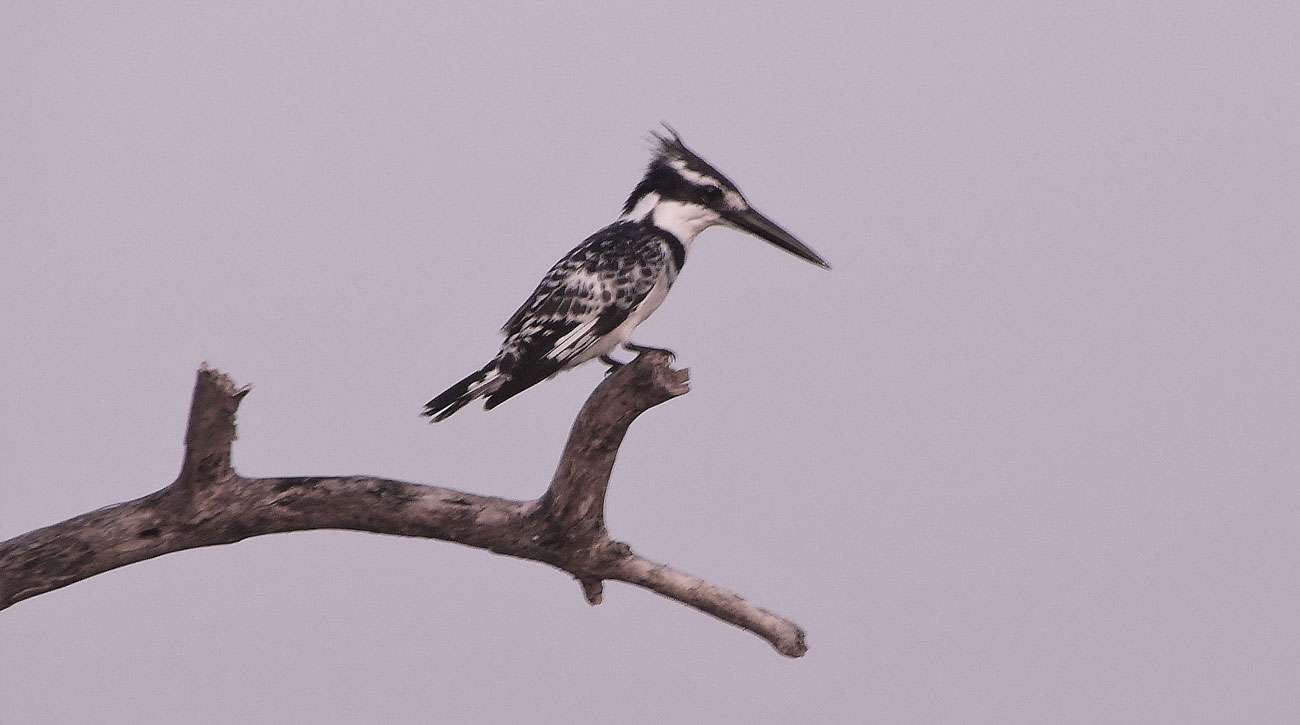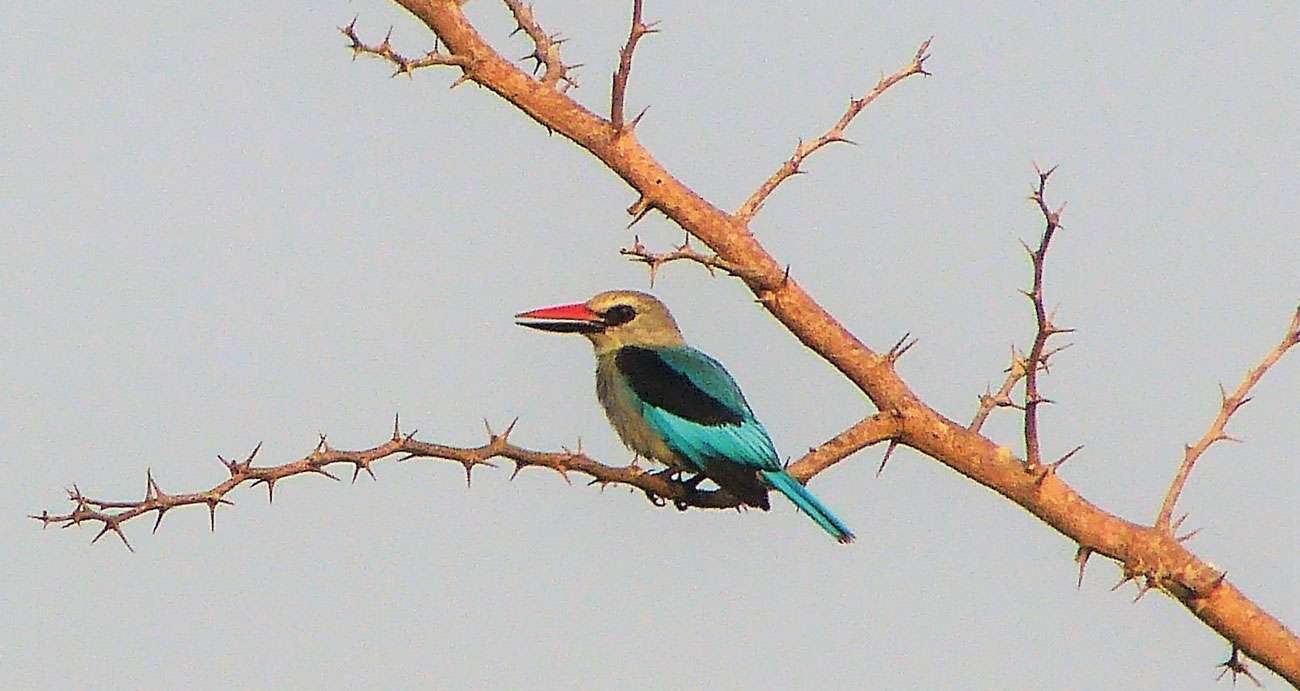
Brown Babblers (Turdoides plebejus)
Many of the birds we see in Cranleigh remind me of some of us – they sensibly get away from it all and take a warm winter break further south.
So I thought it would be fun to see what life is like for them at this time of the year in their vastly different environment. I decided to head down to west Africa to see how they were getting on and to meet some of their exotic new neighbours.
Where better to go than the ‘smiling coast’ of that great continent: The Gambia. At 94 degrees Fahrenheit in the shade the experience gave a whole new meaning to the phrase ‘hot birding’.
Forests were a blessing for their cooler climes but they are disappearing and it was heart- breaking to witness how some species have now vanished with them.
But it was a trip well worth doing, despite assorted bites, various vehicle mishaps, slipping off a boat, a challenged tummy, busting a camera lens, and one disintegrating room door.

Bearded Barbet (Lybius dubius)
Oh, and I won’t forget the general havoc when for a few days we found ourselves taking the same route, and booked into the same encampments, as the president’s entourage during their annual multi-vehicle tour.
I saw 300 species in two weeks. 214 of these were new to me and 44 of the total were birds that have been recorded here in the Cranleigh and Ewhurst district too.
Okay, maybe none of these actual 44 had ever been to Surrey, but some might have done. And it amazed me to think a few could be the very ones who visited us last summer or flew over us last autumn.
The first familiar face I came across was a Wheatear. When I last saw one it was on migration and flycatching on top of a circular hay bale in a field at Smithwood Common back in September. Now, in a vastly different world, here one was very much at home, feeding on a new insect menu provided by a smelly tidal marsh in the company of an array of amazing looking birds.
They included an army of nine different types of dazzling coloured Kingfishers, noisy dopey-looking waders called Senegal Thick-Knees, and the fish, frog and mammal-bashing ‘I take no prisoners’ Hammerkop.

Blue-breasted Kingfisher (Halcyon malimbica)
Out in an area of rough ground and scattered trees the song of another bird attracted my attention. I’d last heard one in a copse near Cranleigh School. It was a Willow Warbler, singing just like they do – increasingly scarcely – at home. But it was no match for the racket of a pair of aptly named Brown Babblers nearby.
The Willow Warbler’s song will soon be gone from this African site because, just like here, it is threatened as the bulldozers move in to make way for new homes.
Down in a disused flooded quarry further inland and beside the 700-mile River Gambia a small party of Sand Martin, which occur annually on migration in Cranleigh, looked well at home.
But the holes in these sandstone cliffs would not be offering them shelter from the baking sun. Flashes of green, orange, red, black and blue whizzed by. A colony of 70 pairs of magnificent Red-throated Bee-eaters were already in residence and excitedly chasing any passing insect before jetting into their burrows.
Bowls of water in a friendly Gambian’s garden trees proved a magnet for an array of more colourful visitors, such as a Bearded Barbet and a Broad-billed Roller, who were turning up in the heat for a drink and a splash.

Pied Kingfisher (Ceryle rudis)
A few yards away a Common Redstart hunkered down in a small bush, perhaps embarrassed at its comparative drabness at this time of year before receiving a plumage upgrade when back with us in April.
Later I scanned across a field containing the leftovers of recently harvested peanuts. There on a fence post, as at Cranleigh Showground, was a Whinchat using its vantage point to survey the surroundings. The lively song of a Black-crowned Tchagra – a type of bush shrike – provided a melancholy backdrop.
Next up, at a stop-off point on the road taking us deeper into the country, we saw some exciting raptors including two species of Goshawk, a Lizard Buzzard, Long Crested Eagle, and a turbo fuelled Lanner Falcon, along with the usual collection of Yellow-billed Kites.
And who should be in the midst of the party? None other than a little Chiffchaff, a common summer bird for us around Cranleigh. It had somehow survived its mile after mile flight. Presumably its journey took it over the fierce deserts of the Western Sahara and Mauritania and here it was, defying the odds, hanging on in the face of treble the number of predators it would encounter here.
Perhaps its relatively unexciting colouration, compared to the technicolour dream coat patterns of many of its new neighbours, helped preserve it from the talons of those birds of prey.

Woodland Kingfisher (Halcyon senegalensis)
A little walk by a reed bed brought another voice sometimes heard from displaced individuals in Cranleigh. A cheery Reed Warbler, singing as if the breeding season had begun. But my attention was soon drawn by something more brilliant hopping by on the mud. A long-tailed orange and brown bird with a black-flecked white crown – a White-crowned Robin Chat.
Other birds of ‘ours’ seen on the trip included a Blackcap, feeding in the same palm tree area as another black, grey and white bird but nearly four times its size – a cackling Western Grey Plantain-eater.
Deep in the mangroves, and on the edges of many areas of open water, was a wading bird often seen by Surrey’s local birders. The Common Sandpiper. In The Gambia it was frequently posing below branches occupied by the African Darter.
This highly agile, dagger-billed bird – like a black, brown and red Cormorant that’s been on hunger strike – invariably dived dramatically off its perch into the water as our small boat cruised by underneath.
I’m so glad that wasn’t the case with the highly venomous six-foot-long Green Mamba snake that our excellent guides, Solomon and Fatou, warned me was resting on a branch above my head as I innocently looked in another direction.
Twitter – @Crane_Spotter
Click here to see all of Robin Stride’s previous Crane Spotters.











